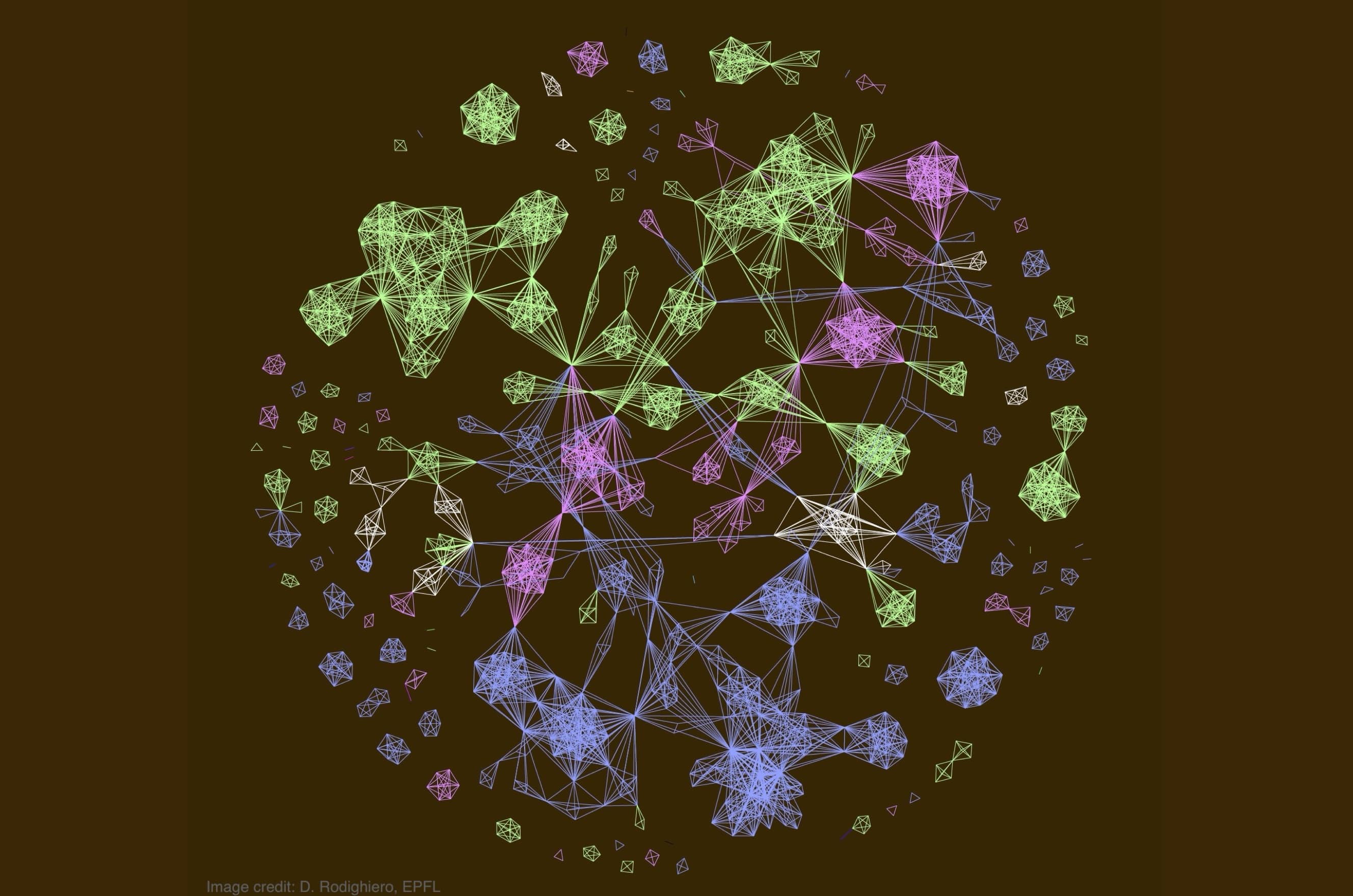
www.buildingsandcities.org/insights/commentaries/t-shaped-interdisciplinarity.html
T-Shaped Interdisciplinarity: A Model for Applied Research?

Challenges ahead: how the conduct of research needs to change
The emergence of scientific discovery at the interface of disciplinary fields is not necessarily driven by the academic system - rather, discovery happens despite it. Marilyne Andersen (EPFL) considers the paradoxical characteristics of interdisciplinarity, that is both declared as a needed research approach but is also rarely recognised as an asset in academic practice. In a landscape of conflicting objectives, built environment research may have something unique to offer to the question of academic interdisciplinarity.
Global challenges and interdisciplinarity
Essentially, all world problems are complex, deeply multidisciplinary and ill-defined. This is the case for the increasingly visible effects of climate change but also for the spectacular developments of artificial intelligence, which in turn has unfathomable impacts on developments related to human health and may, ultimately, question the meaning of work itself. Addressing these global challenges happens mostly at the interfaces between - rather than within the boundaries of - scientific disciplines, as it simultaneously involves numerous fields that are traditionally remote from one another. An interdisciplinary approach is thus the only way forward.
This unprecedented convergence of knowledge fields in research to address inherently connected global challenges offers the potential to reveal fundamentally new understandings and open unexplored scientific horizons. Yet, it comes with significant challenges itself: as research requires deep knowledge and sustained critical thinking to effectively allow new discovery, a generalist attitude should be avoided while the capacity to connect to other domains is a must.
In other words, we need a "T-shaped" interpretation of interdisciplinarity, to re-use a term coined in the early 90s (Guest 1991). To have tangible competences to offer, researchers must come with a deep understanding of a specific field (the vertical bar of the "T"). At the same time, they must be able to connect with other disciplines so as to create a shared understanding of the consequences of decisions (the horizontal bar of the "T").
Supporting discovery at the interface of scientific fields
Being faced with common challenges to address on a global scale can create a new momentum in academia: by acting as a relentless catalyst for innovation, as a federating force for research and knowledge advancement and/or as a driver to rethink today's education needs. But this momentum will have to be carried by the academics themselves, which in turns requires them to acquire the desire to collaborate as well as the necessary financial means.
As further developed by Raymond J Cole in his recent Commentary when discussing discipline-specific research (Cole 2024), research in a given field has established protocols, a specific language and a shared (and evolving) basis of what is "common knowledge" vs. what problems remain to be solved, and the target audience of its publications predominantly comes from within its own disciplinary boundaries. So, publishing beyond these boundaries needs to be attractive to academics, which raises the question of what force(s) are the key drivers in a researcher's pursuit of excellence and discovery.
One of them is, arguably, peer recognition - or peer pressure. One could argue that it is more often than not through a delicate and unstable balance between perceived usefulness (which may be seen as more likely in applied fields and by extension, in interdisciplinary research) and leading-edge value (which may be more evident in fundamental sciences and certainly easier to identify in established fields).
This leads to another duality related to the challenges inherent to interdisciplinary research, that we could categorise as "direct" vs. "indirect" challenges. Direct challenges as issues to be solved through targeted efforts, with indirect challenges as more systemic ones. Examples of direct challenges would typically include the need to, and difficulty of, learning a new scientific language, the extra effort to invest in collaborating across established ecosystems, or the struggle faced by funding instruments to support such efforts effectively. One of the reasons interdisciplinary funding is so hard to implement effectively may actually lie in the fact that its allocation, too, relies on peer recognition (or more specifically here, peer evaluation).
Peer recognition is also one of the underlying factors in the indirect systemic challenges mentioned above. This impacts on decisions involving what proposal receives research funding and an individual's career advancement. Addressing these issues would require a fundamental rethinking of the academic world and the implicit rules governing it. Interdisciplinarity research not only goes against the straightforward peer evaluation of a work's novelty or breakthrough nature (as it is not anchored in a given, well-defined field), it also goes against the inherently disciplinary nature of university rankings. By extension, it questions the ability of the academic system to fairly evaluate tenure-track cases with "unclear" research identities (thereby possibly pushing towards clearer, and thus more traditional, identities) or the attractivity of the academic institutions themselves.
Are we then stuck in a discipline-specific academic world facing interdisciplinary challenges to contribute to? What could research in the built environment offer to address this apparent incompatibility?
Research on the built environment
In the context of urgent action needed to reconcile a more responsible use of resources to stay within planetary boundaries, with the equally important priority of ensuring just social foundations (Raworth 2017), the built environment sector has a key role to play on many levels: in mitigating climate change through the CO2 footprint of what we build (both embodied and operational emissions); in preserving biodiversity through the land and ecosystem footprints of where we build; and in minimising the energy needs of how we build, by efficiently managing resources, material flows and manufacturing processes.
Given the cross-cutting nature these challenges pose and how many fields it puts in relation to one another - from construction materials, technologies and laws to human well-being and health, ecological and environmental health - research in the scientific domains relevant to the building sector is already involved in interdisciplinarity as a scientific environment. Building research is used to the longer timescales commonly associated to interdisciplinary projects: due to its fragmented nature, building practice tends to be characterised by high inertia and slow innovation as it must get multiple thinkers and doers with very distinct skills and habits to work together in a coordinated way. But beyond connecting a range of specific expertise and competences, what built environment research is also uniquely positioned to do is to connect broader scientific fields, namely engineering and natural sciences with social sciences and design.
As most of the global challenges we face today are ill-defined, the engineering world indeed has a lot to benefit from the design world, which thrives on ill-defined questions to address and moves ahead through testing with evolving priorities with somewhat unpredictable decisional dynamics. At the same time, while new knowledge and technological breakthroughs may come from engineering and natural sciences, the "unlocking" breakthrough in effectively implementing sustainability policies may instead come from social foundations (Raworth 2017) and more specifically, from the acceptability of change by the society.
Conclusions
The transformations needed to address climate change and other grand societal challenges imply profound questions on how the society at large will be organised, and specifically how our way of living, working and learning are poised to change fundamentally. Within that context, ethical values will become foundational ones for progress, so that the changes awaiting us are both acceptable and embraced. A purely technocratic approach is likely to be insufficient to overcome our natural resistance to change. A solely market-driven approach may lead to undesirable consequences from a human equity perspective. This critically calls for a sustained dialogue and collaborations between engineering and natural science on one hand, and humanities and social sciences on the other, in order to shape a better collective future.
It so happens that research in the built environment is, by definition, addressing people's needs and behaviour by the act of building itself - if not for that, why build at all? As such, and as a topic that everyone in the civic society easily relates to, it has an obvious role to play in offering tangible solutions and paths forward when it comes to interventions necessary to a more just collective future (Nick 2024) but also in exemplifying "recipes" to consider when exploring new ways to bridge between broad scientific fields, and ultimately in helping to push the academic system to accept new researcher profiles. Profiles closer to a "T" than an "I" while carefully avoiding any overall shift to generalist approaches, as research must remain anchored in deep and substantial knowledge. In other words, it may help informing academia about the ingredients of a new and delicate balance, which is the nature of any interesting equilibrium.
References
Cole, R.J. (2024). Research in a Rapidly Changing and Increasingly Uncertain World. [Commentary] Buildings & Cities. https://www.buildingsandcities.org/insights/commentaries/research-changing-uncertain-world.html
Guest, D. (1991). The hunt is on for the Renaissance Man of computing. The Independent, 17 September 1991. https://wow.agiledata.io/wp-content/uploads/2022/10/David-Guest-1991-The-hunt-is-on-for-the-Renaissance-Man-of-computing.pdf
Nick, S. (2024). Systems perspectives on transforming Swiss housing by 2040: wellbeing, shared spaces, sufficiency, and de-sprawl. Frontiers in Sustainability 5, 31 July 2024. https://doi.org/10.3389/frsus.2024.1375271
Raworth, K. (2017). A Doughnut for the Anthropocene: humanity's compass in the 21st century. The Lancet Planetary Health 1 (2): e48-e49, 5 May 2017. https://doi.org/10.1016/S2542-5196(17)30028-1Latest Peer-Reviewed Journal Content
Built environment governance and professionalism: the end of laissez-faire (again)
S Foxell
Co-creating justice in housing energy transitions through energy living labs
D Ricci, C Leiwakabessy, S van Wieringen, P de Koning & T Konstantinou
HVAC characterisation of existing Canadian buildings for decarbonisation retrofit identification
J Adebisi & J J McArthur
Simulation and the building performance gap [editorial]
M Donn
Developing criteria for effective building-sector commitments in nationally determined contributions
P Graham, K McFarlane & M Taheri
Reimagining circularity: actions for optimising the use of existing buildings
R Lundgren, R Kyrö, S Toivonen & L Tähtinen
Effective interdisciplinary stakeholder engagement in net zero building design
S Vakeva-Baird, F Tahmasebi, JJ Williams & D Mumovic
Metrics for building component disassembly potential: a practical framework
H Järvelä, A Lehto, T Pirilä & M Kuittinen
The unfitness of dwellings: why spatial and conceptual boundaries matter
E Nisonen, D Milián Bernal & S Pelsmakers
Environmental variables and air quality: implications for planning and public health
H Itzhak-Ben-Shalom, T Saroglou, V Multanen, A Vanunu, A Karnieli, D Katoshevski, N Davidovitch & I A Meir
Exploring diverse drivers behind hybrid heating solutions
S Kilpeläinen, S Pelsmakers, R Castaño-Rosa & M-S Miettinen
Urban rooms and the expanded ecology of urban living labs
E Akbil & C Butterworth
Living with extreme heat: perceptions and experiences
L King & C Demski
A systemic decision-making model for energy retrofits
C Schünemann, M Dshemuchadse & S Scherbaum
Modelling site-specific outdoor temperature for buildings in urban environments
K Cebrat, J Narożny, M Baborska-Narożny & M Smektała
Understanding shading through home-use experience, measurement and modelling
M Baborska-Narożny, K Bandurski, & M Grudzińska
Building performance simulation for sensemaking in architectural pedagogy
M Bohm
Beyond the building: governance challenges in social housing retrofit
H Charles
Heat stress in social housing districts: tree cover–built form interaction
C Lopez-Ordoñez, E Garcia-Nevado, H Coch & M Morganti
An observational analysis of shade-related pedestrian activity
M Levenson, D Pearlmutter & O Aleksandrowicz
Learning to sail a building: a people-first approach to retrofit
B Bordass, R Pender, K Steele & A Graham
Market transformations: gas conversion as a blueprint for net zero retrofit
A Gillich
Resistance against zero-emission neighbourhood infrastructuring: key lessons from Norway
T Berker & R Woods
Megatrends and weak signals shaping future real estate
S Toivonen
A strategic niche management framework to scale deep energy retrofits
T H King & M Jemtrud
Generative AI: reconfiguring supervision and doctoral research
P Boyd & D Harding
Exploring interactions between shading and view using visual difference prediction
S Wasilewski & M Andersen
How urban green infrastructure contributes to carbon neutrality [briefing note]
R Hautamäki, L Kulmala, M Ariluoma & L Järvi
Implementing and operating net zero buildings in South Africa
R Terblanche, C May & J Steward
Quantifying inter-dwelling air exchanges during fan pressurisation tests
D Glew, F Thomas, D Miles-Shenton & J Parker
Western Asian and Northern African residential building stocks: archetype analysis
S Akin, A Eghbali, C Nwagwu & E Hertwich



Latest Commentaries
Building-Related Research: New Context, New Challenges
Raymond J. Cole (University of British Columbia) reflects on the key challenges raised in the 34 commissioned essays for Buildings & Cities 5th anniversary. Not only are key research issues identified, but the consequences of changing contexts for conducting research and tailoring its influence on society are highlighted as key areas of action.
Lessons from Disaster Recovery: Build Better Before
Mary C. Comerio (University of California, Berkeley) explains why disaster recovery must begin well before a disaster occurs. The goal is to reduce the potential for damage beforehand by making housing delivery (e.g. capabilities and the physical, technical and institutional infrastructures) both more resilient and more capable of building back after disasters.